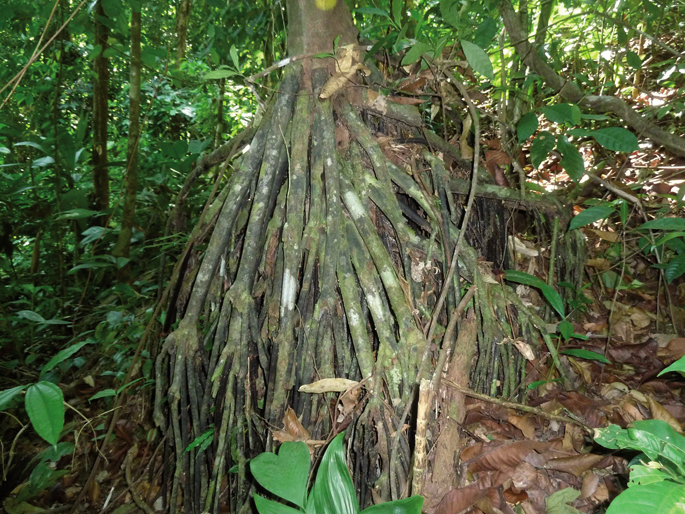Atenas-Oñati-Manaus

Laster ikusiko ditudan itxaropena dut, ondo bidez, Manausen, Amazonasen. Neureak ez, baina elkarren senide diren bi ikustera noa. Bata, Atenasen bataiatua, 1860an. Oñatin bestea, 1798an. Lehen ere bai, baina bataiatu ondoren ere, Erdialdeko Amerika eta Amazonas artean bizi dira.
Sokrates famatuaren ohorez bataiatu zuten Socratea exorrhiza. “Exorrhiza” hitzak adierazten du lurretik kanpora ere sustraiak dituela, trikimako sustraiak. Palmondo bat da, eta oihanean, argia jaso nahi badu, aldameneko zuhaitzekin borrokatuz luza eta luza egin behar, eta lurrean sendo bermatzeko, enbor bakarretik sustraiak luzatuz, oinarria zabaltzen du. Costa Rican, “palmondo ibiltaria” deitzen diote. Oihaneko kaosean adarren bat edo zuhaitzen bat gainera erori eta makurtzen badu, lurra ukituko duen tokian sustrai berriak eman eta zaharrak galduko ditu, eta, hala, bizitoki berri batera mugitu da.
Iriartea deltoidea da Oñatiko kasta duena. Bernardo Iriarte, 1735-1814, Kanarietan jaioa zen, baina bere aitona, Juan Iriarte Etxeberria, oñatiarra omen. Gure Bernardo Espainiako erregeen gobernuetan aritu zen, batean eta bestean (Parman negozio arduradun, Londresen eta Erroman enbaxadako idazkari, Estatu idazkari, “Consejo de Indias”-en idazkari...). Itxuraz, inguruan barra-barra ibiliko zuen diruaren zati bat ikerketarako bideratu zuen, eta mezenas lan horri zor dio geroztik landare genero batek bere izena izatea. Iriartea deltoidea ere palmondoa da, eta, Socratea-k bezala, ibiltari izaera ematen dioten trikimako sustraiak luzatzen ditu. Abizena, “deltoidea”, delta edo hiruki formako hostoek ematen diote.
Hiruki ederra, bai, Atenas-Oñati-Manaus. Atenas, Atena jainkosaren habia. Oñati, amabirjina okupa batek bereganatua. Manaus, bertakoen hizkuntzan “jainkoen ama” esan nahi duena.
Azken mendean Etiopiak galdu ditu antzinako oihanik gehienak, nekazaritzaren, artzaintzaren eta herrialdean laborantza industrial neokolonialak eragindako goseteen presiopean. Alabaina, biodibertsitatez betetako azken baso zatiak geratu dira, fosil gisa, zientoka eliza eta... [+]
Would anyone say that the Amazon rainforest is an abandoned forest? Or that the protected areas of Costa Rica and Borneo are abandoned? Have we declared natural parks because Pagoeta and Aiako Harria are abandoned forests? In all these areas is the natural forest or the natural... [+]
The dandelion tooth flourishes (Taraxacum officinale). Most flourished towards March, and a few flourish further. And here and there you will find your attractive yellow flower for almost all the year. Its open flower is a sign of good time. It had been extended from day to day... [+]
On the day of the presentation of book 111 Hostoz eta Orriz we had the opportunity to learn about the culture of Duzunaritz. A delicious day to round off a series of celebrations that fill the century of Argia. I can't imagine a more beautiful path than to dirty the shoes in... [+]
This morning the woodpecker screamed in the oak of the house (Quercus robur). He'd been a long time, and he seemed angry. The morning is beautiful, fresh but joyful, very clear. We approach the longest days of the year and it is noticeable in the brightness of the morning. But... [+]
Anyway, in good and bad ways, we have been told that we sharpen all the threats, but we have been told five. The world, our world is dying. Our way of life is unsustainable and unsustainable for all the other living things that have touched them to live with us. Every day we are... [+]

























